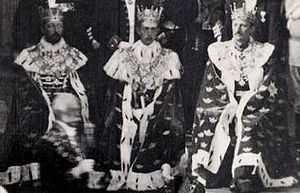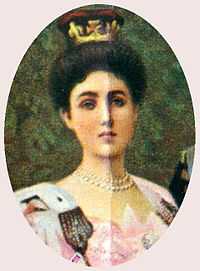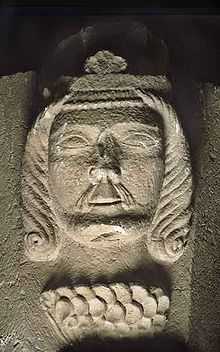Duchies in Sweden


Duchies in Sweden have been allotted since the 13th century to powerful Swedes, almost always to Princes of Sweden (only in some of the dynasties) and wives of the latter. From the beginning these duchies were often centers of regional power, where their dukes and duchesses had considerable executive authority of their own, under the central power of their kings or queens regnant. Since the reign of King Gustav III the titles have practically been nominal, with which their bearers only rarely have enjoyed any ducal authority, though often maintaining specially selected leisure residences in their provinces and some limited measure of cultural attachment to them.
Today
In Sweden today, Duke (hertig) is considered a royal title, and is only given to members of the Royal House (currently Bernadotte). Such modern duchies have always been named for the historical provinces of Sweden, which are no longer governmental entities. Currently, there are four such duchies one of which includes two of the provinces:
- TRH The Duchess and Duke of Västergötland (Crown Princess Victoria and Prince Daniel)
- HRH The Duchess of Östergötland (Princess Estelle)
- HRH The Duke of Värmland (Prince Carl Philip)
- HRH The Duchess of Hälsingland and Gästrikland (Princess Madeleine)
The titles are given for life,[citation needed] though they are not used by monarchs after accession to the throne; thus the titles have not been conferred on women who became Swedish queens by marrying kings, such as the current Queen Silvia. Unlike British duchies, for example, they are not hereditary. Wives of dukes are also created duchesses, a policy that now also applies to the husband of a duchess, following the 2010 marriage of Crown Princess Victoria to Prince Daniel. A prerequisite for a ducal title is being prince or princess of Sweden, and for that being a Swedish citizen.
History


The first use in Swedish of the title of hertig was in 1266 by Prince Magnus, son of Princess Ingeborg and Birger Jarl. That title (derived from German "herzog") then replaced the older Nordic "jarl", both translated into the Latin title dux,[1] (see introduction to list below).
From the 13th century and until 1618, in some Swedish royal houses, when a king had more than one son, he gave each or some of them duchies to rule as fiefs. The geography of these duchies could be unclear, as they were not always within the boundaries of one province and could also be reallotted with territorial changes. Feuds between a king and ducal brothers were common, and ended at times in assassination and fratricide. There was only one non-royal Swedish duke, Benedict, Duke of Halland and Finland.
After the Kalmar Union period, just before his death in 1560, King Gustav I continued the tradition by making his sons John, Magnus and Carl powerful dukes, together ruling much more of the kingdom than their older half-brother Eric, who had a less significant duchy in the southeast. When Eric became King Eric XIV, the imbalance of power his father had created became destructive. John eventually revolted, dethroned Eric and became king; Magnus proved unimportant due to mental health issues, but Carl's duchy of Södermanland prospered as a separate territory for several decades and was made his rise to the throne possible. His duchy was inherited by his younger son, Carl Philip, who died in 1622 having been the last holder of one of the semi-autonomous Swedish duchies, which his brother, King Gustav II Adolph, officially abolished in 1618.
During the subsequent rule of Queen Christina of Sweden, however, her cousin and heir Carl Gustav of the Palatinate-Zweibrücken was titled Duke of Öland by the Swedish sovereign herself, but her government refused to acknowledge that title officially.[2] His father was created Duke of Stegeborg in 1651, a title that a younger brother of Carl Gustav's eventually inherited.
In 1772, King Gustav III reinstated the appointment of dukes, now non-hereditary, for his brothers as courtesy titles, which did add to the international prestige and domestic influence of at least one of them. Since then, all Swedish princes have been created dukes of a province at birth, as well as one Great Prince or Grand Duke of Finland (who died in infancy). During the 20th century, because of constitutional restraints, several princes gave up their royal titles for marriages that were not approved by the King (see Bernadotte af Wisborg). Whether or not they then actually lost their ducal titles too has never been formally or legally determined.
For the first time since the 14th century a Princess of Sweden was created duchess in her own right in 1980, when the Act of Succession was changed so that Princess Victoria became Crown Princess and also Duchess of Västergötland. Her younger sister Madeleine was the first princess to be created duchess at birth, and also the first to get a double duchy (see above), roughly corresponding with the modern governmental limits of Gävleborg County. Such modern ducal titles are handled by the King of Sweden personally, are unregulated by law and not registered as names in the Swedish Tax Agency's population census.
Now the title holders are mainly known domestically as Crown Princess Victoria, Prince Daniel, Princess Estelle, Prince Carl Philip and Princess Madeleine though the ducal titles often are included in formal communication and royal court usage. In writing to them, it is considered correct to address all of them but the Crown Princess by ducal title. As of 1772, the dukes and duchesses do not normally reside permanently within their duchies, though they are associated with them to some extent by making occasional visits, seen as beneficial to public relations for the County Administrative Boards and local business.
List of dukes and duchesses by duchy in Sweden
Professor of art history Jan Svanberg is of the opinion that since Birger Jarl (died 1266) wore a ducal coronet of English and continental European design, he actually was a duke, and that his Latin title of Dux Sueorum should be given as Duke and Regent of Sweden in English.[3] In Sweden and in Swedish then, the meaning of the Latin dux was still interpreted as jarl until Birger's son officially was given the new hertig title, which the Swedes saw, from then on, as the equivalent of duke.[4] Svanberg's opinion would then make duchesses of both of Birger's wives Ingeborg (died 1254) and Matilda (died 1288), in English usage. In addition to his own genealogy, Birger's powerful position has mainly been attributed to his royal marriage to his first consort[5] and to the outcome of the Battle of Sparrsätra.[6] Since his son, however, was the first to bear the Swedish title of hertig, this list begins, in the chronological aspect, with him.
This list of dukes and duchesses in Sweden excludes minor duchies (individual towns, manors, mines, estates) as well as former lands and provinces such as Finland and Estonia which are no longer in the kingdom. For ease of reference, the provinces are listed by their modern Swedish names, although Latin or English exonyms[7] are given as alternatives for some. Years given are those during which ducal titles incontestably were held, regardless of subsequent status as monarchs or former royalty.
Sweden and Swealand (Dux Sueorum as hertig)
- Prince Magnus (as of 1252; King from 1275)
- Prince Eric (1275)
- Eric[8] (1284–1310; then Duke of Södermanland. etc.)
- Ingeborg his widow (1318–1321; also Duchess of Halland, etc.)
Finland and Estonia
Relevant, and at times important, to periods of Sweden's history, when those areas belonged the kingdom, were also the titles Duke of Finland and Duke of Estonia.
Dalarna also known as Dalecarlia
- Prince August (1831–1873)
- Princess Teresia, his wife and widow (1864–1914)
- Prince Carl Johan (1916–1946 only, as per royal court)
Dalsland also known as Dalia
- Prince Eric (1310–1318 – see Swealand 1284–1310)
- Princess Ingiburga, his wife and widow (1312–1326 – see Swealand 1318–1321)
- Prince Magnus (1560–1595 – see East Gothland)
East Gothland: see Östergötland
Eyland: see Öland
Gotland also known as Gothland
- Prince Oscar (1859–1888 only, as per royal court)
Gästrikland also known as Gestricland
- Princess Madeleine (from 1982 — also Hälsingland)
Halland also known as Hallandia
- Prince Eric, Duke of North Hallandia (1310–1318 – see Swealand 1284–1310)
- Princess Ingiburga, his wife and widow, Duchess of North Hallandia (1312–1341 – see Swealand 1318–21)
- Lord Canute Porse, her second husband, Duke of South Hallandia (1327–1330)
- Duchess Ingiburga (above), his wife and widow, now also Duchess of South Hallandia (1327–1341 – see Swealand 1318–1321)
- Lord Canute Canuteson Porse, their son (1330–1350 with his brother and mother)
- Lord Hacon Canuteson Porse, their son (1330–1350 with his brother and mother)
- Duchess Ingiburga (above) in her own right (1341–1353 – see Swealand 1318–1321)
- Lord Benedict Algotson (1353–1356)
- Duchess Ingiburga (above) in her own right again (1356–1361 – see Swealand 1318–1321)
- Prince Bertil (1912–1997)
- Princess Lilian his wife and widow (1976-2013)
Hälsingland also known as Helsingia
- Princess Madeleine (from 1982 — also Gästrikland)
Jämtland also known as Iemptia
- Prince Carl Gustaf (as of 1946, King from 1973)
Närke also known as Nericia
- Prince Carl (as of 1560; King from 1604 – see Södermanland)
- Princess Maria, his first wife (1579–1589 – see Södermanland)
- Princess Christina, his second wife and widow (as of 1592; Queen from 1604 – see Södermanland)
- Prince Carl Philip (1607–1618 – see Södermanland)
- Prince Eugen (1865–1947)
Öland also known as Eyland[9]
- Prince Waldemar (1310–1318 – also Uppland)
- Princess Ingiburga, his wife and widow (1312 to about 1357 – also Uppland)
- Prince Eric, their son (1318 to about 1328 with his mother)
- Crown Prince Eric (as of 1557; King from 1560 – see Småland)
- Crown Prince Carl Gustav (1650–1654 as per sovereign)
Östergötland also known as East Gothland
- Prince Magnus (1560–1595 – also Dalsland)
- Prince John (1606–1618)
- Princess Maria Elizabeth, his wife and widow (1612–1618)
- Prince Frederick Adolph (1772–1803)
- Prince Oscar (as of 1829; King from 1872)
- Princess Sophia, his wife and widow (as of 1857; Queen from 1872)
- Prince Carl (1911–1937 only, as per royal court)
- Princess Estelle (2012–)
Skåne also known as Scania
- Prince Carl (as of 1826; King from 1859)
- Crown Princess Louise, his wife (as of 1850; Queen from 1859)
- Prince Gustaf Adolf (as of 1882; King from 1950)
- Princess Margareta, his first wife (1905–1920)
- Crown Princess Louise, his second wife (as of 1923; Queen from 1950)
Småland also known as Small Lands and the Smallands[10]
- Prince Eric (1275 – see Swealand)
- Crown Prince Eric (as of 1557; King from 1560 – also Öland)
- Prince Carl Gustav (1782–1783)
- Prince Lennart (1909–1932 only, as per royal court)
Södermanland also known as Southmanland[11] and Sudermania
- Prince Eric (1302–1310 – also Dalsland, North Halland, Södermanland, Värmland and West Gothland)
- Duchess Ingiburga, his widow in her own right (1318–1321 – also Halland and as Eric’s wife and widow Dalsland, Värmland and West Gothland)
- Prince Carl (as of 1560; King from 1604 – also Närke and Värmland)
- Princess Maria, his first wife (1579–1589 – also Närke and Värmland)
- Princess Christina, his second wife and widow (as of 1592; Queen from 1604 – also Närke and Värmland)
- Crown Prince Gustav Adolph (1604–1607 – also Västmanland)
- Prince Carl Philip (1607–1618 – also Närke and Värmland)
- Prince Carl (as of 1772; King from 1809)
- Princess Charlotte, his wife and widow (as of 1774; Queen from 1809)
- Crown Prince Oscar (as of 1811; King from 1844)
- Crown Princess Josephine, his wife and widow (as of 1823; Queen from 1844)
- Prince Carl Oscar (1852–1854)
- Prince Wilhelm (1884–1965)
- Princess Maria, his wife (1909 until divorce 1914)
Stegeborg
- Prince John Casimir, widower of Princess Catherine (1651–1652)
- Crown Prince Carl Gustav (1652–1654) later King Carl X Gustav (also see above under Öland)
- Adolph John, their son (1654–1689)
- Elsa Elizabeth Brahe, Duchess of Stegeborg 1662–1689, as Adolph John's consort
Uppland also known as Upland
- Prince Waldemar (1310–1318 - see Öland)
- Princess Ingiburga, his wife (1312–1318 – see Öland)
- Prince Gustav (1827–1852)
- Prince Sigvard (1907–1934 only, as per royal court)
Värmland also known as Vermelandia and Wermelandia
- Prince Eric (1310–1318 – see Swealand 1284–1310)
- Princess Ingiburga, his wife and widow (1312–1326 – see Swealand 1318–1321)
- Prince Carl (as of 1560; King from 1604 – see Södermanland)
- Princess Maria, his first wife (1579–1589 – see Södermanland)
- Princess Christina, his second wife and widow (as of 1592; Queen from 1604 – see Södermanland)
- Prince Carl Philip (1607–1618 – see Södermanland)
- Prince Carl Adolph (1798)
- Prince Gustaf (as of 1858; King from 1907)
- Crown Princess Victoria (as of 1881; Queen from 1907)
- Prince Carl Philip (from 1979)
Västmanland also known as Westmania
- Crown Prince Gustav Adolph (1610–1611 – see Södermanland)
- Prince Erik (1889–1918)
Västerbotten also known as West Bothnia
- Prince Gustaf Adolf (1906–1947)
- Princess Sibylla, his wife and widow (1932–1972)
Västergötland also known as West Gothland
- Prince Eric (1310–1318 – see Swealand 1284–1310)
- Princess Ingiburga, his wife and widow (1312–1326 – see Swealand 1318–21)
- Prince Carl (1861–1951)
- Princess Ingeborg, his wife and widow (1897–1958)
- Crown Princess Victoria (from 1980)
- Prince Daniel, her husband (from 2010)
Non-ducal provinces
Seven of Sweden's 25 modern provinces are not listed above because as yet (2012) they have never had any dukes or duchesses:
- Ångermanland also known as Angermannia
- Blekinge also known as Blekingia
- Bohuslän also known as Bahusia
- Härjedalen also known as Heriedalia
- Lappland also known as Swedish Lapland
- Medelpad also known as Medelpadia
- Norrbotten also known as North Bothnia
See also
Footnotes
- ↑ Nationalencyklopedin: Hertig
- ↑ Paul Meijer Granqvist in Carl X Gustaf “den förste pfalzaren”, Askerbergs, Stockholm, 1910 p. 56
- ↑ Prof. Jan Svanberg in Furstebilder från folkungatid ISBN 91-85884-52-9 pp. 97 & 104-106
- ↑ Prof. Jan Svanberg in Furstebilder från folkungatid ISBN 91-85884-52-9 p. 97
- ↑ Schück in Sveriges konungar och drottningar genom tiderna, Svensk Litteratur, Stockholm, 1952, p. 147
- ↑ Lagerqvist in Sverige och dess regenter under 1000 år ISBN 91-0-075007-7 p. 71
- ↑ Eric Linklater in The Life of Charles XII pp. 53-54 & throughout
- ↑ Ducal seal at Commons
- ↑ William Morris Endeavor as here
- ↑ William Morris Endeavor as here
- ↑ William Morris Endeavor as here
References
- Main reference as of 2010-12-12: Bonniers konversationslexikon encyclopaedia, Stockholm 1949, pp. 884–885
- Fredrik Fryxell as per Svenskt biografiskt lexikon below pdf here
.jpg)